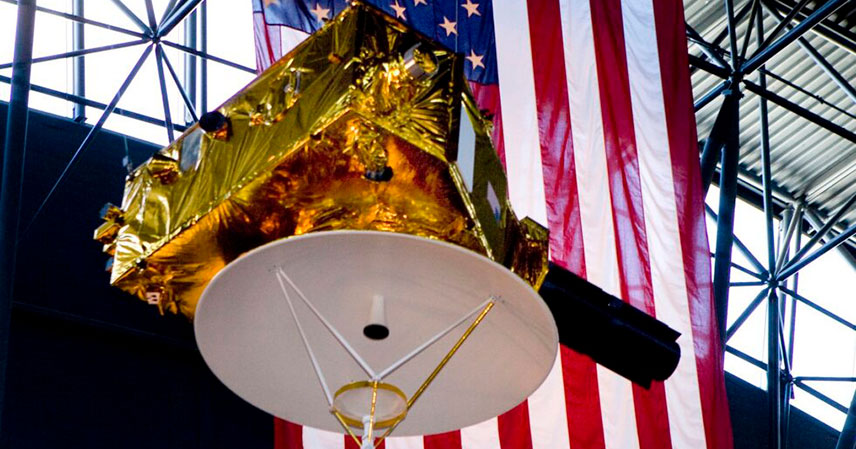The clock is ticking for 19 active space missions exploring our universe. Federal funding is set to expire at the end of September, creating a critical juncture for these vital scientific endeavors. A government shutdown looms if Congress fails to pass a budget before October 1st, leaving the fate of these ambitious projects hanging in the balance. This isn’t just about robots and rockets; it’s about our understanding of Earth, our solar system, and the cosmos beyond.
The potential consequences extend far beyond the immediate halt of ongoing research. Years of planning, development, and countless hours of work by dedicated scientists and engineers could be jeopardized. The ripple effect on scientific progress and technological innovation would be significant, impacting not only our understanding of the universe but also potentially delaying crucial advancements with wider applications.
What Happened? 📝
The current fiscal year’s budget is set to expire on September 30th. Congress needs to approve a new budget before then to avoid a government shutdown. However, the White House’s proposed budget for fiscal year 2026 includes a drastic 25% cut to NASA’s overall budget, with a staggering nearly 50% reduction specifically targeting the agency’s Science Mission Directorate.
This proposed cut directly threatens at least 41 missions, a significant portion of which are already underway. Nineteen of these missions are currently active in space, conducting vital research into Earth’s climate, exploring the solar system, and pushing the boundaries of our understanding of the universe. These missions represent years of investment, meticulous planning, and groundbreaking scientific potential.
The Stakes Are High ⬆️
The potential impact of these funding cuts extends far beyond the immediate termination of ongoing projects. The loss of these missions represents a significant setback for scientific progress. Many of these projects are on the cusp of major breakthroughs, and halting them would mean lost opportunities to gather critical data and answer fundamental questions about our planet and the cosmos.
Furthermore, the abrupt cessation of funding could lead to the loss of highly skilled personnel. Scientists and engineers working on these missions might be forced to seek employment elsewhere, leading to a brain drain within the scientific community. This loss of expertise would be extremely difficult, if not impossible, to recover in the future.
What is a Continuing Resolution? 🤔
If Congress doesn’t pass a new budget by the deadline, they may opt for a continuing resolution (CR). This is a temporary measure that extends the current funding levels into the early weeks or months of the next fiscal year. While a CR would prevent an immediate shutdown, it only provides a short-term solution and doesn’t address the proposed cuts to NASA’s budget.
A CR would offer a temporary reprieve, buying time to negotiate a long-term budget. However, this temporary fix could create uncertainty and instability for the missions, making long-term planning and resource allocation incredibly difficult. The lack of a clear funding picture could stifle future research and innovation.
The Impact on Scientific Discovery 🔭
The proposed budget cuts would significantly hamper our ability to study Earth’s climate, a crucial aspect of understanding and mitigating climate change. Many of the affected missions collect vital data about our planet’s atmosphere, oceans, and ice sheets, providing essential insights into the complex processes driving climate change.
Similarly, the cuts would affect our exploration of the solar system and beyond. Missions studying other planets, moons, and asteroids provide valuable information about the formation of our solar system and the potential for life beyond Earth. Halting these missions would represent a major step backward in our quest to understand our place in the universe.
Key Takeaways 🔑
- Federal funding for 19 active space missions is set to expire at the end of September.
- The White House proposed a significant budget cut to NASA, potentially halting at least 41 missions.
- A government shutdown is a real possibility if Congress fails to act before October 1st.
- A continuing resolution could offer a temporary fix, but it doesn’t address the long-term funding concerns.
- The potential consequences include lost scientific progress, a brain drain in the scientific community, and a significant setback in our understanding of Earth and the cosmos.
The situation remains fluid, and the outcome will depend heavily on the actions of Congress. The coming weeks will be crucial in determining the fate of these vital space missions, including long-term projects like the Orbiting Carbon Observatory, and the future of space exploration. The scientific community, and indeed the world, will be watching closely.
Source: Scientists: It’s do or die time for America’s primacy exploring the Solar System



